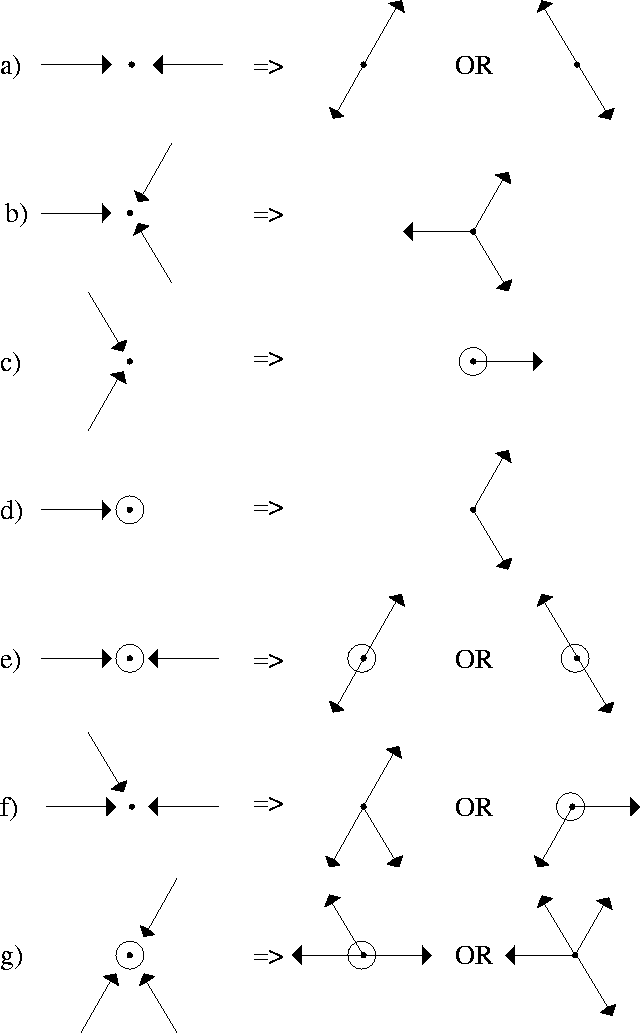In 1986 Frisch Hasslacher and Pomeau (FHP) [5] introduced a
lattice gas model based on a hexagonal grid. The six link directions
![]() , shown in figure 3-3, are
, shown in figure 3-3, are

Figure 3-3: The hexagonal grid used in the FHP model.
![]() . As with the HPP
model each of the particles travels with unit speed and an exclusion
principle is applied allowing only one particle to travel in each
direction along a link.
Rest particles can also be introduced into the model. A rest particle
remains at rest at a site, link
. As with the HPP
model each of the particles travels with unit speed and an exclusion
principle is applied allowing only one particle to travel in each
direction along a link.
Rest particles can also be introduced into the model. A rest particle
remains at rest at a site, link ![]() , but is able
to take part in a collision
with particles arriving at the site. A
set of collision rules on a hexagonal lattice is shown in
figure 3-4
, but is able
to take part in a collision
with particles arriving at the site. A
set of collision rules on a hexagonal lattice is shown in
figure 3-4

Figure 3-4: A set of collision
rules for the FHP model. The sites are represented by
the small filled circles and rest particles are represented by the large
empty circles.
where the small filled circles represent the lattice site and the large
empty circles represent a rest particle at the site. The full set of
collisions can be obtained by combining the collisions of figure
3-4 with the collisions found by rotating the particles through
multiples of ![]() and considering the collision duals, formed by
swapping the full and empty links. As in figure
3-2 the left hand column represents the possible incoming
configurations. The right hand column represents the outgoing
configurations, however now there may be a choice between two different
possible outcomes; when this happens one of the choices is picked at random.
Again, it can be clearly seen that each individual rule conserve both
particle number and momentum at each site.
and considering the collision duals, formed by
swapping the full and empty links. As in figure
3-2 the left hand column represents the possible incoming
configurations. The right hand column represents the outgoing
configurations, however now there may be a choice between two different
possible outcomes; when this happens one of the choices is picked at random.
Again, it can be clearly seen that each individual rule conserve both
particle number and momentum at each site.